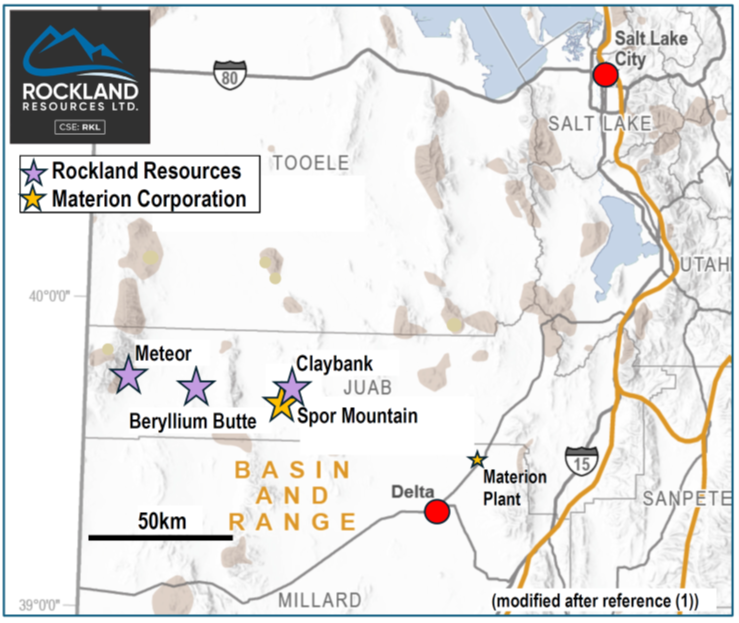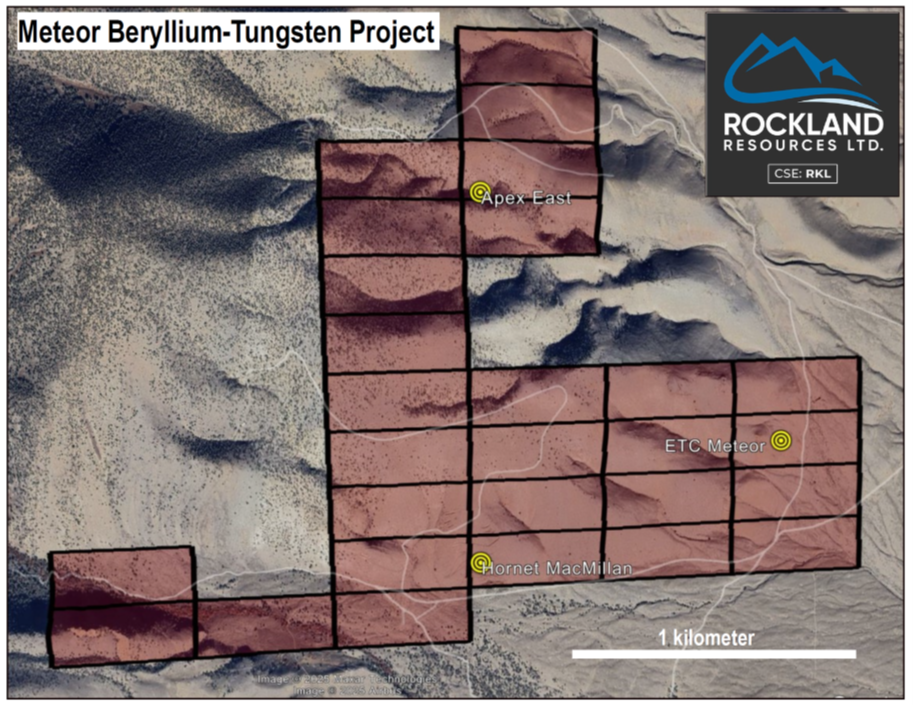Overview
The Meteor Beryllium and Tungsten Project, located 25 kilometres west of the Company’s keystone Beryllium Butte project in Juab County, Utah, project comprises 28 unpatented mining claims covering 525.2 acres (212.5 ha). The property features numerous exploration targets including the historical East Apex Mine, Hornet Mine, Eastern Trout Creek Mine, and the MacMillan and Meteor Prospects.

In addition to the beryllium reported at Meteor, we have the bonus of historical tungsten production. At a time when foreign sources for this critical element have become increasingly constrained, we will fully investigate the economics of both elements as we advance the Meteor Project.
- Will Rascan, President

Exploration Targets
The East Apex Mine in the northern part of the project area includes a 70ft (21.3m) adit with surface sampling of three separate igneous dikes reporting values of 3.2ft (1.0m) at 0.55% BeO, 3.5ft (1.1m) at 2.42% BeO, and 5.0ft (1.5m) at 1.07% BeO. The beryllium is believed to be in the mineral beryl that occurs in pegmatite dikes.
The Hornet Mine has a 118ft (36.0m) adit and several bulldozer surface exposures. It was discovered in 1941 with production in 1952-53 reporting 60 tons of ore averaging 2.0% WO3. Mineralization at the Hornet Mine consists of the tungsten mineral scheelite as coatings on northwest-striking fractures in an amphibolite. No assays for beryllium are reported for the Hornet Mine.
The East Trout Creek Mine area is located in the southern portion of the project area, approximately 2,600ft (792.5m) north-east of the Hornet Mine. Three shafts and five prospect pits were developed for tungsten, but production results were not reported. Beryl was observed to occur with tungsten in quartz veins and pegmatite dykes.
The MacMillan Prospect is 1,200ft (365.8m) north of the Hornet Mine, and has three 10ft (3.0m) open cuts that exposed a scheelite-bearing contact metasomatic zone along the contact of pegmatite (alaskite) with Precambrian country rock.
The Meteor Prospect is immediately south of East Trout Creek Mine and consists of early-stage pitting with no published results for tungsten or beryllium.
Project Image Gallery


